Whatcom County
Sphingidae
Smerinthus ophthalmica, Lynden, Whatcom County, Washington,
courtesy of Gary Vander Giessen.
|
|
Updated as per James P. Tuttle's The Hawk Moths of North America, July 7, 2010 Updated for Hemaris thetis, July 7, 2010, replacing H. diffinis; probably H. senta is also H. thetis. Updated as per personal communication with Gary Vander Giessen; (Smerinthus ophthalmica; Lynden), July 7, 2010 Updated as per Butterflies and Moths of North America website, formerly USGS; July 7, 2010 Updated as per personal communication with Joy Moran; (Smerinthus ophthalmica; Lummi Island, July 22, 2012); July 25, 2012 Updated as per personal communication with Patty Volland (Smerinthus ophthalmica; Bellingham, July 7, 2013); July 11, 2013 |
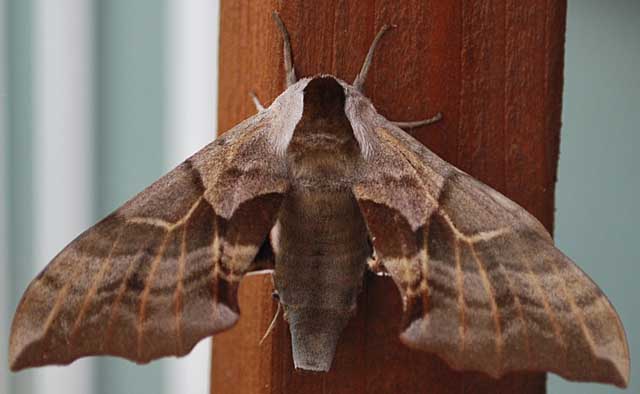
Smerinthus ophthalmica, Lynden, Whatcom County, Washington,
courtesy of Gary Vander Giessen.
This page is dedicated to Gary Vander Giessen of Lynden, Washington. Gary sent me the images of Smerinthus ophthalmica at top and bottom of this page.
The Cascades seem to be a barrier to some of the more eastern species.
A "USGS" indicates the moth is reported in USGS and/or in Moths of Western North America, #2. Distribution of Sphingidae of Western North America, revised, an excellent little booklet available through Paul Opler.
A "WO" after the species name indicates that I have no confirmed reports of this species in Whatcom County, but I (William Oehlke) expect that this moth is or might be present.
Please help me develop this list with improved, documented accuracy by sending sightings (species, date, location), preferably with an image, via email to Bill Oehlke.
Many thanks also to Joy Moran who sends the following image from Lummi Island.
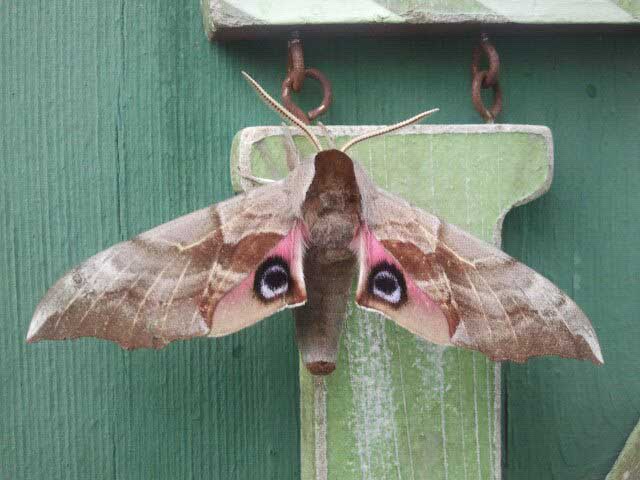
Smerinthus ophthalmica, Lummi Island, Whatcom County, Washington,
July 22, 2012, courtesy of Joy Moran.
Many thanks also to Patty Volland who sends the following image from Bellingham.
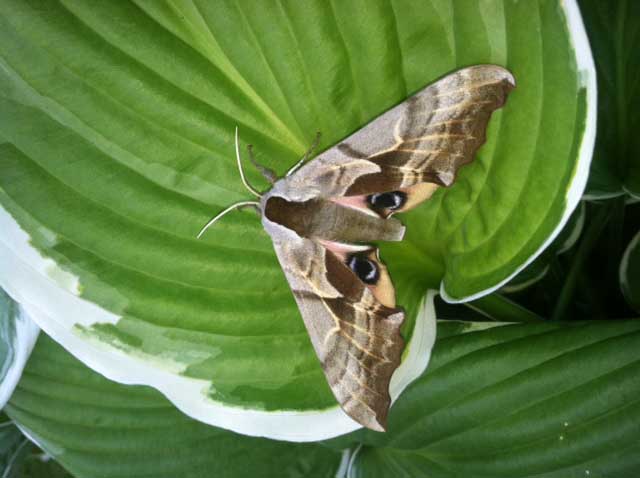
Smerinthus ophthalmica, Bellingham, Whatcom County, Washington,
July 7, 2013, courtesy of Patty Volland.
Sphinginae subfamily
Smerinthini Tribe:
Smerinthus ophthalmica, Ferndale, July 12, 2010, Sabrina England. Smerinthus ophthalmica, Lummi Island, July 22, 2012, courtesy of Joy Moran. Smerinthus ophthalmica, Bellingham, July 7, 2012, courtesy of Patty Volland.
Macroglossinae subfamilyDilophonotini tribe:
Macroglossini tribe:
|
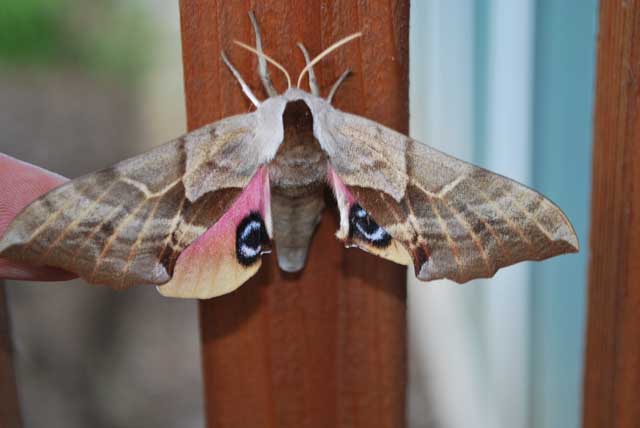
Smerinthus ophthalmica, Lynden, Whatcom County, Washington,
courtesy of Gary Vander Giessen.
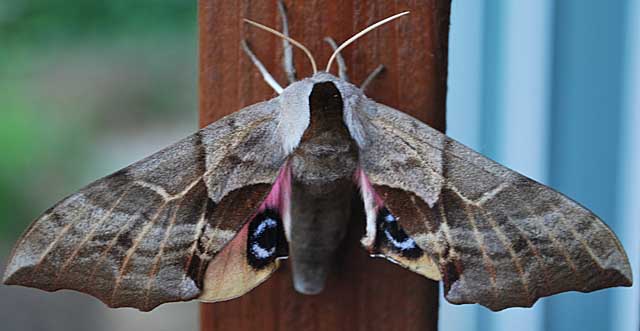
Smerinthus ophthalmica, Lynden, Whatcom County, Washington,
courtesy of Gary Vander Giessen.
Bob Pyle BP reports, " I
have a confirmed (collected) record for P. clarkiae from Whatcom CO"
Enjoy some of nature's wonderments, giant silk moth cocoons. These cocoons are for sale winter and fall. Beautiful Saturniidae moths will emerge the following spring and summer. Read Actias luna rearing article. Additional online help available.
Use your browser "Back" button to return to the previous page.
This page is brought to you by Bill Oehlke and the WLSS. Pages are on space rented from Bizland. If you would like to become a "Patron of the Sphingidae Site", contact Bill.
Please send sightings/images to Bill. I will do my best to respond to requests for identification help.
 Show appreciation for this site by clicking on flashing butterfly to the left. The link will take you to a page with links to many insect sites. |